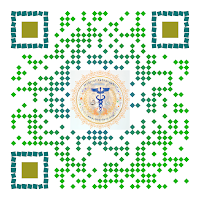Bile acids are the end products of cholesterol catabolism. Cholic acid and chenodeoxycholic acid are the major primary bile acids synthesized in human livers and are conjugated with taurine or glycine for secretion into bile. Human liver synthesizes about 200 to 600 mg bile acids per day. The net daily turnover of bile acids is about 5% of a total bile acid pool of about 3 g. Conversion of cholesterol to bile acids involves 17 distinct enzymes located in the cytosol, endoplasmic reticulum, mitochondria, and peroxisome. After each meal, cholecystokinin secreted from the intestine stimulates gallbladder contraction to empty bile acids into the intestinal tract. When passing down the intestinal tract, small amounts of unconjugated bile acids are reabsorbed in the upper intestine by passive diffusion. Most bile acids (95%) are reabsorbed in the brush border membrane of the terminal ileum, trans diffused across the enterocyte to the basolateral membrane, and secreted into portal blood circulation to liver sinusoids and are taken up into hepatocytes. Bile acids lost in the feces (~0.5 g/day) are replenished by de novo synthesis in the liver to maintain a constant bile acid pool.
Bile acids stimulate glucagon-like peptide 1 (GLP1) production in the distal small bowel and colon, stimulating insulin secretion, and therefore, are involved in carbohydrate and fat metabolism. Bile acids through their insulin sensitizing effect play a part in insulin resistance and type 2 diabetes. Bile acid metabolism is altered in obesity and diabetes.



%20is%20the%20protrusion%20of%20one%20eye%20or%20both%20anteriorly%20out%20of%20the%20orbit.%20Exophthalmos%20used%20to%20refer%20to%20severe%20(18%20mm)%20proptosis.jpg)



.jpg)
,%20especially%20in%20the%20early%20stages.%20When%20present,%20symptoms%20are%20vague%20&%20nonspecific.%20Early%20symptoms%20-%20severe%20fatigue%20(74%25),%20impotence%20(45%25),%20arthralgia%20(44%25).%20Most%20common%20s.jpg)









